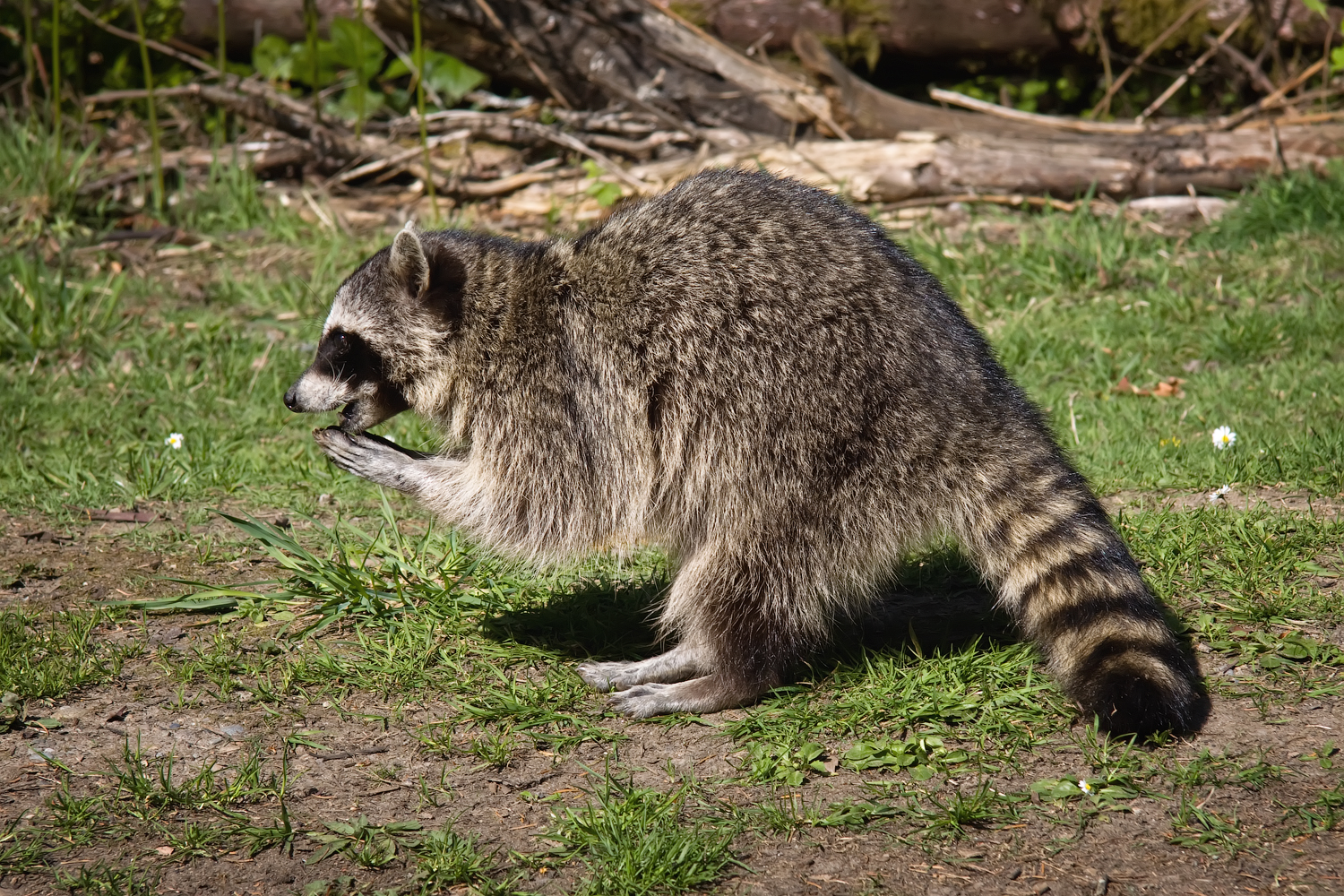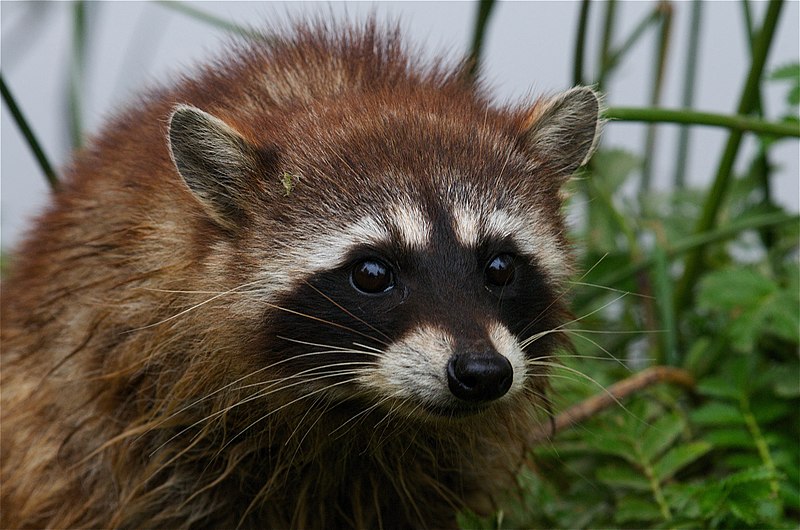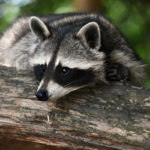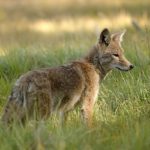Yes, raccoons are carnivores, but they have a diverse diet that includes more than just meat
Raccoons have long been the cheeky bandits of the animal kingdom, sneaking around with their little masked faces and nimble fingers. But what exactly do these nocturnal foragers feast on? You might think of them as dumpster divers with a penchant for human leftovers, but there’s much more to their diet than meets the eye.
The question “Are raccoons carnivores?” often pops up, and the answer is a resounding yes but with a twist. Raccoons are indeed carnivores, but their culinary preferences are as diverse and adaptable as their mischievous habits.
We’re going to unravel the dietary mysteries of raccoons, exploring their carnivorous tendencies alongside their omnivorous adventures. By understanding what raccoons eat, we can better appreciate these fascinating creatures and learn how to coexist with them more harmoniously. So, let’s dive into the wild and varied menu of the raccoon world and discover what makes these critters such versatile eaters.
Key Takeaways
- Raccoons are primarily carnivores but have a varied diet.
- They are opportunistic eaters.
- Understanding their diet helps in managing and coexisting with them.
What Makes a Carnivore
To truly understand whether raccoons are carnivores, we first need to grasp what being a carnivore entails. In the animal kingdom, a carnivore is an organism that primarily eats meat. This classification is based on their dietary habits and the physical traits that support a meat-based diet.
Carnivores often possess sharp teeth and claws designed for hunting and consuming other animals. Their digestive systems are optimized to break down protein and fat from meat efficiently. These animals are typically predators or scavengers, and their diets can range from strictly carnivorous, eating only animal flesh, to facultative carnivores, which eat meat as well as non-animal foods.
But not all carnivores are created equal. Some, like lions and tigers, are obligate carnivores, meaning they rely almost entirely on meat for their nutritional needs. Others, like raccoons, are more flexible in their eating habits. Raccoons have the physical traits of carnivores—sharp teeth and claws for catching and eating prey—but they are also opportunistic feeders. This means they eat whatever is available, including plants and insects, blurring the line between strict carnivory and omnivory.
Understanding these traits and behaviors helps us see why raccoons, while classified as carnivores, have such a diverse diet that includes much more than just meat.

Raccoon Dietary Habits
Raccoons are the ultimate foodies of the animal world, and their dietary habits reflect their adaptability and resourcefulness. In the wild, raccoons’ diets are primarily carnivorous but highly varied, allowing them to thrive in diverse environments.
Meat and Protein Sources
Raccoons are adept hunters and scavengers, feasting on a wide range of animal-based foods. Their carnivorous diet includes insects, amphibians, small mammals, and birds. They are particularly fond of eggs, raiding nests when the opportunity arises. Additionally, raccoons are skilled at fishing, often catching crayfish, frogs, and small fish from streams and ponds.
Plant-Based Foods
Despite their classification as carnivores, raccoons do not limit themselves to meat. They are opportunistic eaters with a taste for plant-based foods, especially when animal prey is scarce. Fruits, nuts, berries, and seeds make up a significant portion of their diet, especially in the fall when these foods are plentiful. Raccoons have been known to raid gardens and orchards, enjoying everything from apples and cherries to corn and melons.
Foraging Behavior
Raccoons are nocturnal foragers, meaning they primarily search for food at night. Their incredible dexterity allows them to open containers, manipulate objects, and explore their surroundings in search of a meal. This foraging behavior makes them well-suited to living in both rural and urban environments, where they can find food in natural settings as well as human-made ones.
Diverse Diet for Survival
The key to raccoons’ survival lies in their dietary flexibility. This adaptability enables them to thrive in various habitats, from forests and wetlands to suburban neighborhoods and cities. By eating a wide range of foods, raccoons ensure they have access to the nutrients they need year-round, regardless of seasonal changes in food availability.
In summary, while raccoons are primarily carnivores, their dietary habits are remarkably diverse. They balance their meat consumption with a substantial intake of plant-based foods, showcasing their versatility and making them true omnivorous opportunists in the wild.
Omnivorous Tendencies
Raccoons are not your typical carnivores. While they have the tools and instincts of meat-eaters, their diet often veers into omnivorous territory. This omnivorous behavior is a testament to their adaptability and survival skills.
Plant-Based Preferences
Raccoons have a notable fondness for plant-based foods, especially during certain times of the year. Fruits, nuts, and berries are a significant part of their diet, providing essential vitamins and nutrients. In the summer and fall, when these foods are abundant, raccoons can often be found feasting on wild berries, grapes, and persimmons. Their ability to climb trees and dexterous hands make it easy for them to access these treats.
Vegetables and Grains
In addition to fruits, raccoons also consume a variety of vegetables and grains. Cornfields and vegetable gardens are common targets for raccoons, who take advantage of the easy access to nutritious food. They are particularly known for their love of sweet corn, often causing frustration for farmers and gardeners. This preference for grains and vegetables highlights their flexible eating habits and ability to exploit different food sources.
Foraging in Urban Areas
Raccoons’ omnivorous tendencies are particularly evident in urban environments, where they often forage through garbage bins and compost heaps. Here, they find a mix of leftovers, food scraps, and even pet food. This behavior not only demonstrates their adaptability but also their ingenuity in finding food in human-dominated landscapes. Urban raccoons have learned to thrive on a varied diet that includes everything from pizza crusts to peanut butter sandwiches.
Balancing the Diet
While raccoons are equipped to hunt and consume meat, their diet is balanced with significant amounts of plant-based foods. This balance is crucial for their health, providing a mix of proteins, fats, and carbohydrates. The ability to switch between animal and plant foods ensures that raccoons can find sustenance in almost any environment, making them one of the most adaptable animals in the wild.
In conclusion, raccoons’ omnivorous tendencies are a key aspect of their survival strategy. By incorporating a wide range of plant-based foods into their diet, they can thrive in diverse habitats and take advantage of various food sources, showcasing their remarkable adaptability.
Seasonal Diet Variations
Just like us, raccoons adjust their diet based on the seasons, taking full advantage of what’s available at different times of the year. This seasonal variation is another testament to their incredible adaptability and resourcefulness.
Spring: The Season of Abundance
Spring is a time of plenty for raccoons. As the weather warms up and the world comes alive again, raccoons feast on a variety of fresh, seasonal foods. Insects and other small invertebrates become more active, providing a rich source of protein. Amphibians like frogs and toads, emerging from their winter hibernation, also become easy prey. Additionally, the early growth of plants and the availability of young shoots and berries add to their diverse diet.
Summer: A Mixed Feast
Summer offers a smorgasbord of food options for raccoons. The warmer months bring an abundance of fruits, vegetables, and grains. Raccoons raid gardens and orchards for ripe fruits like apples, cherries, and berries. Cornfields also become a favorite for their sweet corn. In addition to plant-based foods, raccoons continue to hunt small animals and forage for insects. Ponds and streams are teeming with crayfish and small fish, adding variety to their diet.
Fall: Preparing for Winter
Fall is a crucial time for raccoons as they prepare for the leaner months of winter. During this season, raccoons focus on fattening up by consuming high-calorie foods. Nuts and acorns become staples in their diet, providing essential fats and proteins. Fruits like persimmons and grapes are also in abundance, offering a sugary boost. Raccoons will eat voraciously during this time, building up fat reserves to help them survive through the winter.
Winter: Survival Mode
Winter is the toughest season for raccoons, as food becomes scarce. During this time, raccoons rely heavily on their stored fat reserves. Their activity levels decrease, and they spend more time in their dens to conserve energy. When they do venture out, raccoons scavenge for any available food, often relying on whatever they can find, including carrion and any leftover human food scraps. Their ability to survive on minimal resources during winter showcases their resilience.
In summary, raccoons’ diet changes with the seasons, allowing them to make the most of available resources year-round. From the abundance of spring and summer to the preparation and scarcity of fall and winter, raccoons demonstrate remarkable adaptability, ensuring their survival through the changing seasons.
Human Impact on Raccoon Diet
As humans continue to encroach on natural habitats, raccoons have proven to be remarkably adaptable, often thriving in urban and suburban environments. This adaptability has significantly influenced their dietary habits, leading to some unique and sometimes problematic behaviors.
Urban Foraging
In cities and towns, raccoons have become adept urban foragers. They exploit human-generated food sources with ease, rummaging through garbage bins, compost piles, and even sneaking into pet food bowls left outside. This urban foraging behavior demonstrates raccoons’ opportunistic nature, as they take advantage of the easy, high-calorie meals that human environments provide. Pizza crusts, leftover sandwiches, and fast food wrappers become part of their eclectic diet.
Impact on Natural Behavior
While raccoons’ ability to adapt to human presence is impressive, it does come with drawbacks. Reliance on human food sources can alter their natural foraging behavior and dietary preferences. Instead of hunting and gathering in the wild, urban raccoons often opt for the convenience of scavenging in human areas. This shift can lead to nutritional imbalances, as their diet becomes less varied and more reliant on processed foods.
Human-Raccoon Conflicts
The intersection of raccoon dietary habits and human environments often leads to conflicts. Homeowners may find their trash cans raided, gardens pillaged, and attics invaded. These behaviors, while driven by the search for food, can cause significant damage and nuisance. Understanding raccoons’ dietary needs and habits is crucial for managing these conflicts effectively. Measures such as securing garbage bins, removing outdoor food sources, and raccoon-proofing homes can help mitigate these issues.
Positive Interactions
Despite the challenges, there are ways humans can coexist peacefully with raccoons by understanding and respecting their dietary habits. Providing alternative food sources, like compost bins that are inaccessible to raccoons, can help divert them from more problematic foraging. Additionally, educating communities about raccoons’ role in the ecosystem and promoting humane deterrence methods can foster a more harmonious relationship between humans and raccoons.
In conclusion, human impact on raccoon diets is significant, leading to changes in their natural foraging behaviors and sometimes causing conflicts. By understanding these impacts and taking steps to manage interactions, we can coexist with these adaptable creatures while minimizing negative outcomes.
Why It Matters
Understanding the dietary habits of raccoons isn’t just about satisfying curiosity—it’s crucial for wildlife management, conservation, and ensuring peaceful coexistence between humans and raccoons. Here’s why it matters:
Wildlife Management and Conservation
Knowing what raccoons eat helps wildlife managers develop effective conservation strategies. Raccoons play a significant role in their ecosystems by controlling insect and rodent populations and dispersing seeds through their droppings. By understanding their diet, conservationists can monitor ecosystem health and address any imbalances caused by changes in raccoon populations. Effective wildlife management practices can help maintain biodiversity and the overall health of natural habitats.
Preventing Property Damage
Raccoons’ foraging habits can lead to significant property damage, especially when they raid garbage bins, gardens, and homes in search of food. By understanding their dietary preferences, homeowners can take proactive measures to protect their property. Securing trash cans, using raccoon-proof compost bins, and keeping pet food indoors are simple steps that can prevent raccoon-related damage. Knowledge about their diet can also inform better urban planning and waste management practices, reducing the likelihood of human-raccoon conflicts.
Promoting Coexistence
Educating communities about raccoon dietary habits promotes coexistence between humans and wildlife. When people understand that raccoons are simply looking for food, they can take humane steps to deter them without causing harm. This includes using non-lethal deterrents, such as motion-activated lights and noise makers, to keep raccoons away from homes and gardens. By fostering a greater appreciation for raccoons and their role in the environment, we can reduce fear and negative attitudes towards these intelligent creatures.
Reducing Health Risks
Raccoons can carry diseases that pose risks to humans and pets, such as rabies and leptospirosis. Understanding their diet and foraging behavior can help minimize these health risks. For example, by securing food sources and keeping areas clean, we can reduce the likelihood of raccoons coming into close contact with humans and domestic animals. Public health campaigns that educate people about raccoon behavior and safe practices can further help in mitigating these risks.
In summary, understanding raccoons’ dietary habits is essential for effective wildlife management, property protection, promoting coexistence, and reducing health risks. By gaining insights into what raccoons eat and how they forage, we can develop better strategies to live harmoniously with these adaptable and fascinating creatures.














